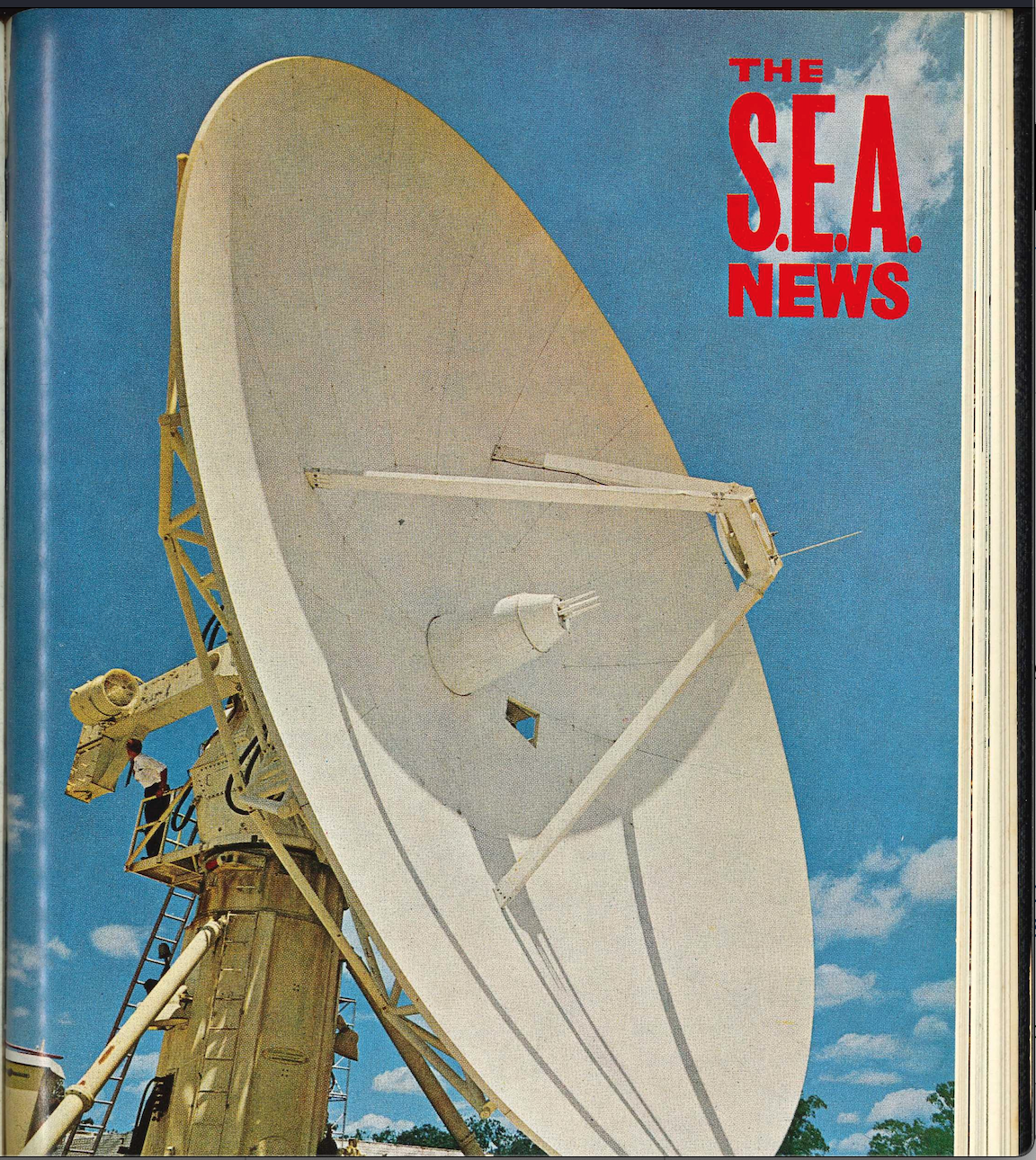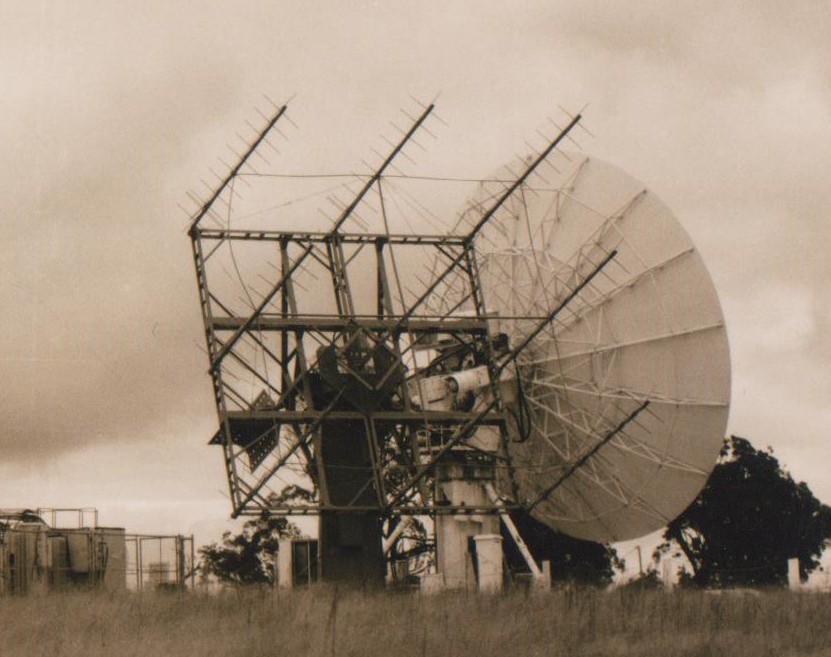Toowoomba and the men on the moon ...
In an empty paddock 20 kilometres north of Toowoomba lies the remnants of Queensland’s link to the first moon landing in 1969.
Today, all that is left is a few slabs of cracked and worn concrete on a low rise of land next to the Cooby Dam. A visitor in 1967, however, could expect the sight of long, low trailers, technicians engrossed in complicated control panels, and the sound of American voices leaking from long-distance radio communication sets, backed by the continuous whine of the power generators.
But the first thing one would notice in 1967 would be the 40 ft diameter parabolic antenna, a huge tilted saucer dominating the 6-hectare site.

Cooby Creek dish in the S.E.A newsletter, April, 1967
NASA's network Down Under
The Cooby Creek tracking station was one of 6 tracking stations built in Australia through the early and mid 1960s as part of an agreement between the Australian and United States governments in support of the US space program. In 1967, Australia contained the most space tracking and communications stations outside of the US.
The National Aeronautics and Space Administration’s (NASA) capital investment in Australia at the time was around $70 million – almost $A1 billion in today's money.
Cooby Creek was an important part of the Applications Technology Satellite (ATS) project. As an experimental station, its role involved communications testing at both microwave and very high frequencies, satellite control and stabilisation, meteorology, navigation, and the propagation of radio waves through the Earth's atmosphere.
This quiet, secluded spot in rural Queensland was chosen precisely because of its silence and seclusion. Because of the nature of the work, a site with minimal radio interference was needed. The high ground to the south and south-west of the site screened the station from man-made radio frequency interference which could have jeopardised the reception of the satellite signals. The lower horizon to the north-west permitted low angle tracking, and the station was arranged to give the antenna an unrestricted 180-degree view.
Cooby Creek Tracking Station site looking north, 10 April 1969.
Introducing the world of colour television
But why was the testing important? While the main point of the station may have been to experiment with the travel efficiency of manned and unmanned spacecraft, stations in the ATS project were designed as multi-faceted sites tasked with gaining practical advantages from space exploration and technology.
One of the most important aspects of the project was concerned with the use of satellites for high-quality video, voice and data transmission.
Cooby Creek station even holds the title for one of the first places in Australia to receive a colour television broadcast in 1967, 8 years before colour TV launched nationally. It also helped televise and transmit some of the first international broadcasts in and out of Australia, including Harold Holt’s memorial service, Australia Day at Expo 67 in Montreal, and the international TV program Our World.
While not as well known as other Australian antennae like the dishes at Parkes or Honeysuckle Creek, Cooby Creek still played an important role in the Project Apollo lunar missions as the tests conducted at the site eventually led to the design of Apollo 11’s communication systems. The station also acted as a backup receiver to broadcast to the world the vision of man’s first walk on the moon.
While the station was closed in 1970 and the site returned to the sleepy back-paddock it was before, the experiments conducted at Cooby Creek still benefit us today, from improvements to satellite TV broadcasting, GPS navigation, and innovation in space exploration.

Cooby Creek tracking station phased yagi array with satellite dish in the background
State Library created a digital story on the Cooby Creek Tracking Station in 2021. Former staff member Patrick Hetherman, a synchronous controller in the telemetry and command section, discusses the establishment, purpose and significance of the station, and former employee Veda Finlay remembers life at the station. Watch the digital story below.
'We all congregated in the canteen to watch man land on the moon. They set up a huge TV and it was so exciting to think that … we'd played a bit of a part in it.'
Veda Finlay, who worked at Cooby Creek Space Tracking Station in the 1960s
Cooby Creek Tracking Station Toowoomba [digital story], 2021, Mt Nebo Multimedia, John Oxley Libray, State Library of Queensland.
Resources and further reading
Comments
Your email address will not be published.
We welcome relevant, respectful comments.